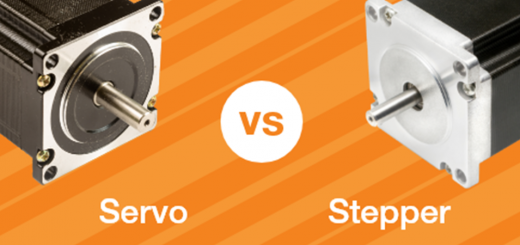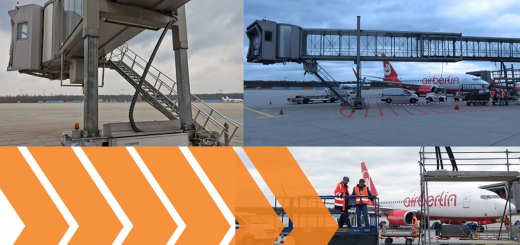What Are the Different Types of RV Slide Out Mechanisms?
By Avory Brookins

Image: By Claygate at en.wikipedia – Own work, Public Domain, https://commons.wikimedia.org/w/index.php?curid=14390773
It’s obvious why RV slides ‒ also known as slide outs, pop outs or bump outs ‒ would be beneficial additions to any recreational vehicle. Who wouldn’t want more space in their home on wheels, right? But, understanding the differences between the types of slide out mechanisms is just as important so you can design the right RV that meets the needs and wants of your customers. Read on to learn about the differences between electric and hydraulic slides, their pros and cons, and how to prevent damage to moving cables.
Electric Motor Driven Slides
Electric slide systems use an electric motor to drive a slide gear or cable, which expands and retracts the slide. They’re typically used on smaller, lighter slides and are less expensive and less complicated than hydraulic systems. They’re also pretty easy to override if something goes wrong. Common issues with electric slides include overloaded motors, the gearbox breaking, and drag during use.
Electric motor driven slide out mechanisms include rack and pinion, cable, Schwintek, and the not-so-common power gear.
Rack and Pinion Slides
Rack and pinion slides are one of the oldest, most common and most affordable systems out there. To open and close the slide, pinions spin over racks with teeth or holes that are installed along the bottom of the slide.
The system is floor flush capable, much more wall flush compared to cable slides (discussed below), and allow for taller ceilings since the mechanism doesn’t have to be hidden on the inside of the vehicle’s wall. However, rack and pinion slides are much heavier than cable slides and require lubrication to function properly.
Cable Slides
Cable slides are the most expensive slide out systems available. They consist of cables and pulleys that pull the slide out and in.
Cable slides are very lightweight but can support big, heavy, deep slides, and, according to the above video, are extremely reliable with some of the best service records. They don’t encounter many corrosion issues either and can be floor flush.
The downside of cable slides is that the mechanism is installed inside the camper wall above the slide, which causes it to “stick into” the RV a few extra inches. That means the ceiling in the slide out will be a little bit lower and it could be more challenging for end users to lay out the RV and choose furniture.
Schwintek Slides
These slides have a bad reputation in the RV industry, potentially due to their improper use. Schwintek slides are very inexpensive systems, but they were designed to support low loads and shallow slides like a closet or sofa. According to the above video, RV designers started using them in 16-foot-long slide outs, which are intended to support multiple or large pieces of furniture, to reduce the price of their RVs for consumers. However, the slides’ motors started failing because of the deep slides and extra weight.
Schwintek slides work by using worm gears and rails mounted on the top and bottom of the sides of the slide out to roll the slide out and in. This slide mechanism is not floor flush capable ‒ it only moves in and out in a straight line ‒ but it is self-aligning, which is great if it gets bumped out of place. Schwintek slides are an above-floor slide, which allows for the main deck to be carpetless, and the mechanism doesn’t have to be hidden inside the RV, freeing up some extra space.
Power Gear Slides
Power gear slides are the fastest moving electric motor driven slide but very uncommon. They’re lightweight, very close to wall flush, and ideal for slides that would be too heavy for Schwintek systems to support.
Hydraulic Slides
Hydraulic slides are typically used in large, heavy slides that hold things like kitchens and living rooms. Within the system, a motor-driven hydraulic pump uses hydraulic fluid to drive rams that push the slides out and in. The direction is controlled by a combination of valves.
Hydraulic slides move much faster than electric motor driven slides and are less expensive if you have more than one slide out since the system only requires one motor. However, hydraulic slides are much more complex and parts of the system, like the valves, pump and hydraulic line, can fail due to excessive heat or wear.
Preventing Damage to Moving Cables
As you know, there are a lot of moving parts on a slide out, including lines and cables for water, gas, power, etc. It’s important to make sure that these lines and cables are properly aligned and free to move with the slide out, or else they could get pinched. Pinching a 120V line, for example, could cause an electrical short inside of an RV, so it’s best to avoid dangerous situations like that by keeping cables safe with cable carriers.
igus® offers highly engineered plastic cable carriers that are quick and easy to fill. They’re also dirt resistant, available with interior separators, and guaranteed to last for 36 months. Visit our webpage to learn more or contact an igus® expert with any questions. You can also check out some of our other self-lubricating, maintenance-free solutions for the RV industry here.
Sources:
1. https://www.youtube.com/watch?v=JEN5gYf4lQ8
2. https://www.youtube.com/watch?v=QRfXx4O4qAw
3. https://lifeonroute.com/how-rv-slide-outs-work/
4. https://www.exploreusa.com/blog/rv-slideout-types-and-common-problems/



